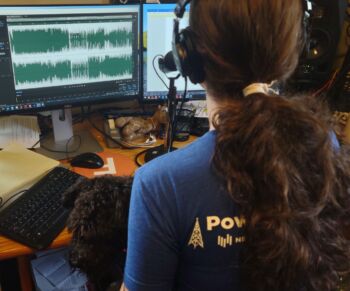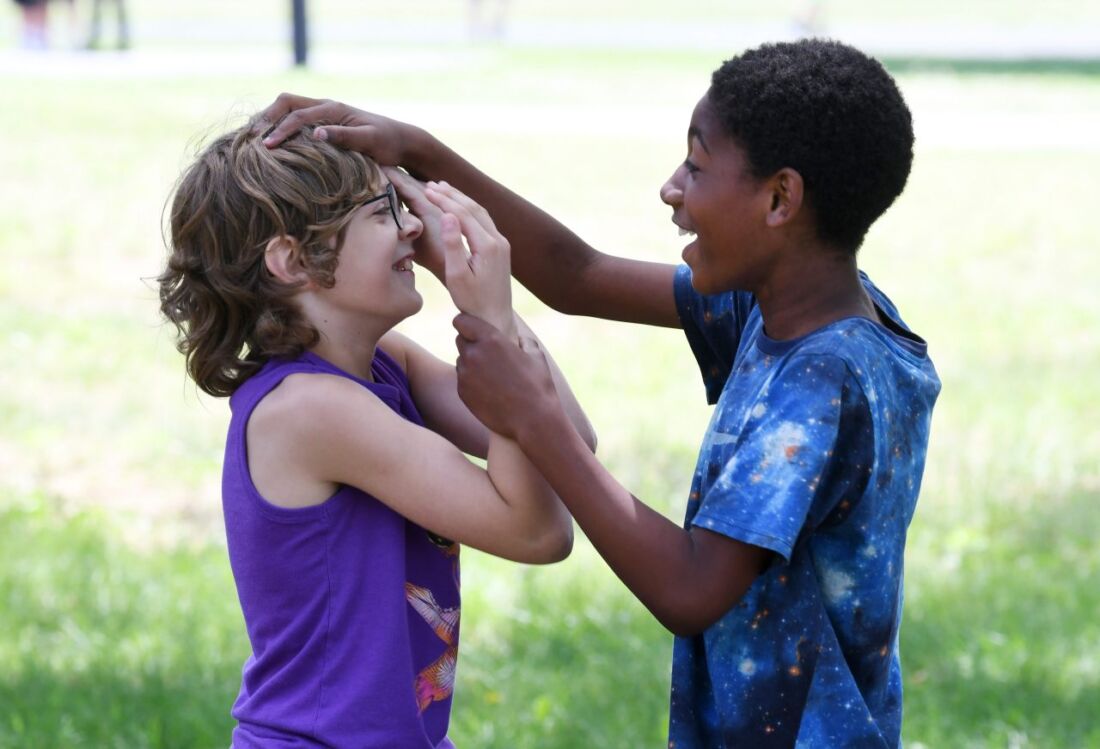March 31, 2023 Community Stories
Could Theater Help Save Planet Earth?
One day all the bees in the world could be gone.
It’s the sort of grim reality you would expect to come face to face with on the pages of the daily paper or on your favorite news show.
Not on a stage.
Do I mean all the bees, as in every single bee on earth?

In one of its most well-known shows, To Bee or not to Bee, Piti Theatre Company built an entertaining and educational performance around the fact that the world is losing bees and other pollinators at an alarming rate. The promo material for the show states that “in 2006-2007, U.S. beekeepers lost 50% of their bees.”
A report from Beyond Pesticides tells the full story of the demise of these valuable pollinators, upon which three out of four food groups depend.
So yes, that’s the message behind this award-winning play by Piti; if we don’t bee today, one day we will not bee at all.
It underlies a bigger message, carried in the under and overtones of a lot of the work produced by Piti; that we need to be aware of nature, cherish it, and protect it.
Jonathan Mirin, Piti Theatre’s Artistic Director, remembers that their very first grant from the Community Foundation of Western Massachusetts (CFWM) was for a nature fable called Elmer and the Elder Tree.
“We have done a lot of environmentally themed work for families and schools,” he says. “In other words, we create performances that tell an ecological story, dramatizing ecological themes.”
That first grant that Mirin is referring to was 15 years ago. Piti Theatre Company and CFWM have maintained a community partnership since then.
One of the Piti Theatre programs that CFWM has helped bring to life is its successful Valley Playwright Mentorship program (VPM).

VPM, an afterchool program for teens ages 13 and up, is one of several ways that Piti is passing on its legacy of care for the community to a new generation of theatre makers. Participants are taught how to take stories from their own lives and build them up into entertaining performances or podcasts. These productions are then shared with the community.
Another value that Piti is passing on is that artists must be paid for their work. This is why teens who complete the VPM program receive a stipend.
Beyond VPM, Piti has always found ways of bringing young people into its productions. “We enjoy having children and teens tell their own stories and performing alongside them,” Mirin explains. “We do that in different ways. For instance, we’ll go to a school district in Maine and do a residency where we work with 3rd and 4th graders for a week and create a performance or ‘streaming theater’ documentary about their local history.”

Launched in Greenfield and the Hilltowns, VPM has been such a hit that Piti is fundraising to start a group in Holyoke in the fall in collaboration with Holyoke Media.
Emery King, a teen who joined VPM in 2019, credits the program with helping him become more confident. “Because I have learned how to communicate with people in VPM, and have gotten more comfortable with it, I am more comfortable leading projects with the Mohawk Trail Equity Alliance…I feel more comfortable talking to teachers, principals, and community members about the issues we are trying to solve.”
Mirin explains that community-based art making is important for Piti. “We’re gearing less towards, ‘What’s the big thing we want to impact?’ and more towards, ‘What does the community need?’”
This sort of focus speaks to Piti’s interest in the power of local history. Through their ‘Your Town’ program, they help residents come face to face with present day social issues in their community while at the same time drawing a line that connects these to historical events in that town.
But ecology is the heart of Piti’s work. “The mission is to plant seeds of joy, sustainability and justice,” says Mirin.
Piti is currently raising funds to purchase 17 acres of land and a barn in Western Franklin County to create a center for ecology and the arts.
And the world’s bees still have a fighting chance. One of the features of the center will be bee hives. Lots and lots of bee hives.
Lights. Camera. Honey.
